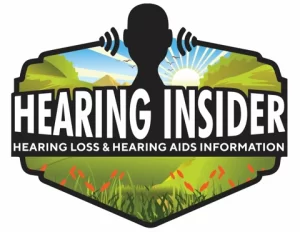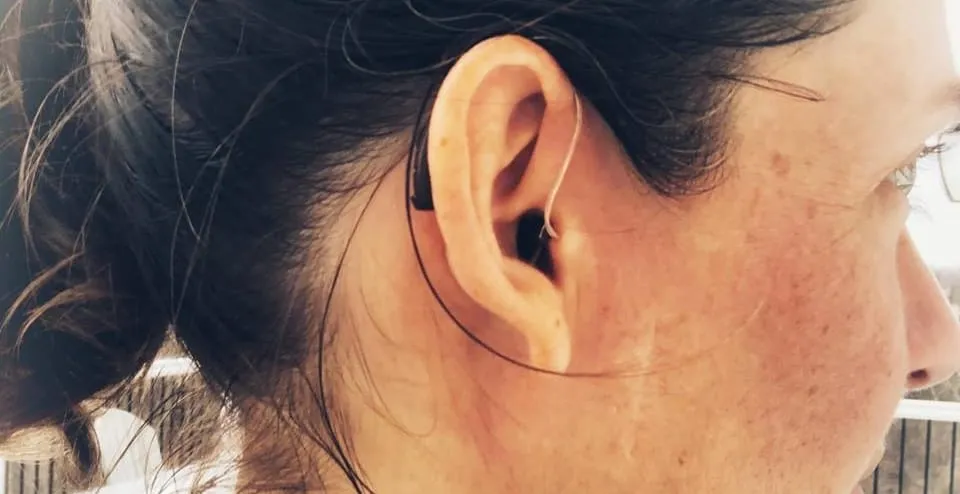Hearing aid patients who have gotten ear infections often wonder if their hearing aid might have caused it. Ear infections are often considered a problem that only occurs in childhood. In fact, having an ear infection may seem like a common rite of passage for children. But for some people, ear infections don’t just occur in childhood. Unfortunately for some, they can occur into adulthood as well. So why do adults get ear infections? Does wearing a hearing aid cause ear infections? How can hearing aid users avoid getting ear infections?
So can hearing aids cause ear infections? Though wearing a hearing aid does not directly cause ear infections, consistent use of a hearing aid without utilizing proper cleaning techniques may result in increased susceptibility to ear infections. This may be due to microorganisms and bacteria growing and living on and in the hearing aid.
But before you take your germy hearing aid out of your ear and throw it across the room, make sure you understand what causes ear infections, why hearing aid wearers may be more susceptible to ear infections, how you can avoid ear infections, and what to do if you are a hearing aid user and get an ear infection.
What is an Ear Infection?
A common type of ear infection, sometimes called otitis media, occurs in the middle ear (the air-filled space behind the eardrum that contains the small, vibrating bones of the ear). A middle ear infection is caused by fluid trapped behind the eardrum and often originates from colds, flu, or allergies. Upper respiratory issues, such as sinus or throat infections, can also lead to middle ear infections.
This can cause congestion and swelling of the nasal passages, throat, and eustachian tubes. The eustachian tubes connect the middle ear to the back of the throat and nasal passage. Its role is to regulate air pressure in the middle ear. An infection can cause the eustachian tubes to become irritated and swell, which can prevent them from draining properly. When the fluid inside the Eustachian tubes cannot drain, it builds up in the middle ear and can become infected (Mayo Clinic).
Common signs and symptoms of a middle ear infection include:
- Ear pain
- Difficulty hearing (plugged, muffled, or pressure sensation in the ear)
- Drainage of fluid from the ear
- Fever
Another type of ear infection occurs in the outer ear. This type of infection is called otitis externa, or swimmer’s ear since it often begins as a result of water that remains in the ear after swimming or bathing. The moisture in the ear becomes the perfect breeding ground for bacteria. A bacterial infection may occur in the outer ear if it is scratched or irritated.
Common signs and symptoms of an outer ear infection include:
- Ear pain
- Tenderness
- Redness
- Swelling
Ear infections can lead to pain and swelling in the ear canal, which can prevent a hearing aid from fitting comfortably. The infection can also affect the quality of hearing, making certain types of hearing aids uncomfortable to wear. This can last for several days and sometimes even weeks.
Are Hearing Aid Wearers More Likely to Get Ear Infections?

Wearing a hearing aid does not necessarily cause ear infections. However, without the use of proper cleaning and care of a hearing aid, those that wear them may be more susceptible to ear infections. Additionally, if a hearing aid does not fit properly in the ear or is uncomfortable to wear, the ear canal may become scratched or irritated, which may lead to an infection.
One study investigated the presence or absence of bacterial and fungal microorganisms on the surface of hearing aids (Bankaitis, 2002). Researchers collected specimen from the custom hearing aids of ten participants. Results indicated light to moderate amounts of 10 different bacteria and 3 fungi from the hearing aid examined in the study. Each of the 10 hearing aids contained at least one bacterium, with Coag Neg staphylococcus recovered from 9 of the 10 hearing aids.
The investigation stressed that it was not designed to determine cause and effect; therefore, the data that was obtained did not identify hearing aids as a course for the spread of disease. However, the results discovered in the study might make hearing aids wearers want to establish a proper cleaning routine for their hearing aids to avoid infection.
How Can I Avoid Ear Infections When Wearing Hearing Aids?

The easiest way to avoid ear infections when wearing a hearing aid is to keep a regular cleaning routine for your hearing aids. Cleaning and caring for your hearing aids may also help the hearing aids to sound better and to last longer. Use the following tips to clean your hearing aids:
Get the proper cleaning tools: Your hearing aids may come with a wax pick and brush. These tools are essential for successful at-home cleaning of the hearing aids. Earwax and debris can accumulate in the small vent or in the opening of the hearing aid where the sound comes out.
This can cause feedback or sound to seem weak. Use the pick to gently scoop the wax out of the vent area. Use the brush to gently clear the earwax away. Some hearing aids also come with replaceable “wax traps” or “wax guards.” These small pieces prevent wax from getting to the receiver of the hearing aid and causing the hearing aid to malfunction. If you are unsure of how to replace the wax traps or how to clean the hearing aid, consult with your hearing care professional.
Establish good habits: Clean your hearing aids daily. By cleaning your hearing aids each night when you take them out before bed, you are allowing them several hours to air out before wearing them again. Avoid using chemicals or alcohol wipes when cleaning hearing aids, as these products could cause damage to the devices but you can use audiowipes.
Additionally, leave your hearing aids out during your daily hygiene routine. Take out your hearing aids when showering or bathing or when you wash your face and hair in order to avoid soap and water damage. Put your hearing aids in only after you apply hair spray or gel as these products may also cause damage to the devices.
There are several types of hearing aid styles.
Use the following steps to clean your specific style hearing aid:
· How to clean an in-the-ear (ITE) hearing aid:
1. Use a soft brush to clear away wax built up in or around the openings of the hearing aid.
2. Use a wax pick (affiliate link to Amazon) or hook to clear any wax or debris from the openings that did not come out with the brush.
3. Wipe off the entire hearing aid with a clean, dry cloth in order to remove any debris from the case of the hearing aid.
4. Replace wax guards (learn how here), as needed.
How to clean a behind-the-ear (BTE) hearing aid and earmold:
1. Remove debris or wax with a soft brush or a clean, dry cloth.
2. Use a wax pick or hook to clear any wax or debris from the openings in the earmold.
3. You can remove the earmold from the hook to clean it. You can wipe the earmold with a soft cloth or soak it in warm, soapy water. NOTE: Only soak the EARMOLD in water. DO NOT submerge the hearing aid in water. Allow the earmold to dry completely before reattaching it to the hearing aid.
How to clean a receiver-in-the-canal (RIC) hearing aid:
1. Remove debris or wax from the soft plastic dome with a soft brush or a clean, dry cloth.
2. Use a wax pick to clear any wax or debris from the dome.
3. Replace wax guards, as needed.
Additional tips:
· Keep your hearing aids in a safe, dry place. DO NOT store them in your bathroom, since heat and humidity may cause damage to the hearing aid.
· You may also consider using a hearing aid dehumidifier (affiliate to Amazon), especially if you live in a humid climate or frequently perspire. There are two main types of hearing aid dehumidifiers. One is a plastic jaw with a desiccant that helps to draw out moisture when the hearing aids are placed inside. The other is called a dry & store (affiliate to Amazon), which uses ultraviolet light and light air to dry and sanitize the hearing aids.
· Have your hearing aids professionally cleaned regularly (about every 6 months). Hearing care providers are able to use specialized vacuums to suction dust, debris, and wax from the hearing aids. They can also safely clean the hearing aid and change specific parts, as needed.
· If you are not sure how to properly clean or care for your hearing aids, seek advice from your hearing care professional.
Another important way to avoid ear infections when wearing hearing aids is by making sure that the hearing aid fits properly in the ear. If the hearing aid is causing any discomfort, you may risk scratching your ear canal. An open wound in the ear may become infected. To avoid this, discuss your hearing aid fitting concerns with your hearing care professional.
What Do I Do if I Wear a Hearing Aid and I Get an Ear Infection?
If you are a hearing aid user and you get an infection, don’t panic. Instead, let your ears get as much air circulation as possible. Remove your hearing aids often in order to allow your ears a chance to “breathe.” This is especially important if you wear an in-the-ear (ITE) style hearing aid since the hearing aid acts as a plug and does not allow much air from reaching the ear canal and eardrum. Additionally, keep your ears as dry as possible. If the infection has not eased or cleared in a few days, consult with your doctor. A doctor can prescribe antibiotics or eardrops to help clear a bacterial ear infection.
Throughout the duration of the ear infection, it is important to continue your hearing aid cleaning routine. It is easy for bacteria to live and grow on your hearing aids. So even if your ears become clear of infection, an unclean hearing aid may cause you to re-infect your ears with bacteria.
Summary
Wearing a hearing aid does not directly result in getting an ear infection. However, those who wear hearing aids and do not utilize a proper cleaning technique may be more likely to get an ear infection. Using cleaning techniques discussed in this article and consulting with your hearing care professional can help hearing aid wearers avoid common mistakes that may lead to infection.
References:
Bankaitis, A. U. (2002) What’s growing on your patients’ hearing aids? A study gives you an idea. The Hearing Journal. 55(6): 48-54.

